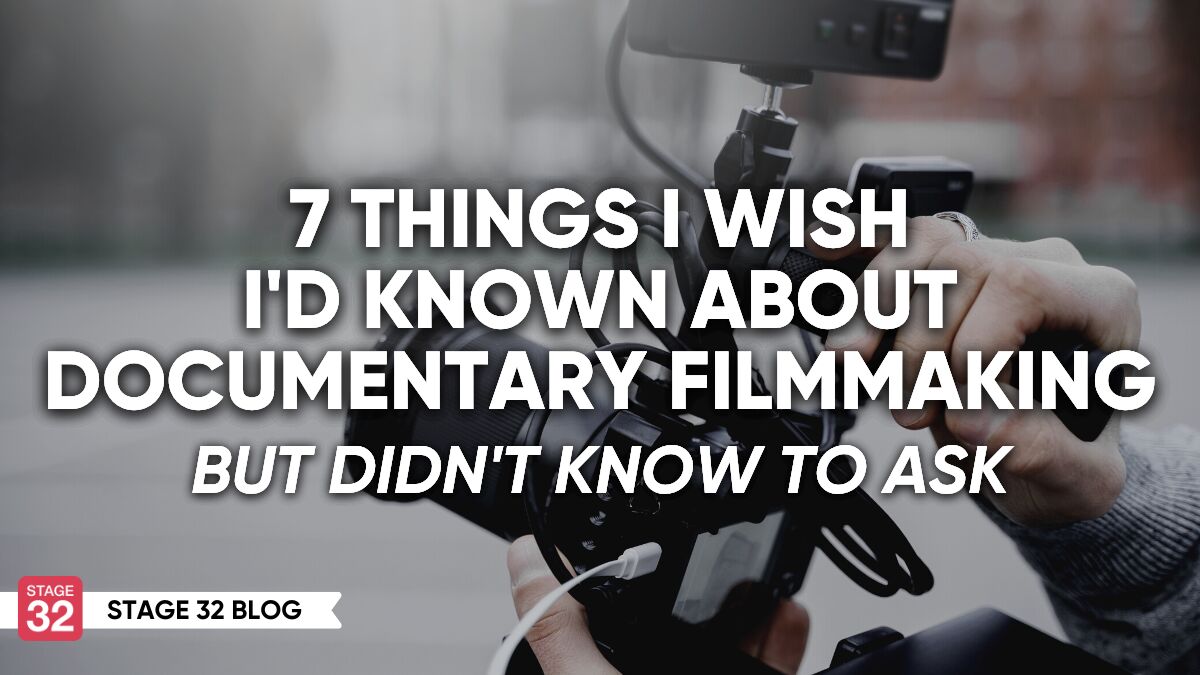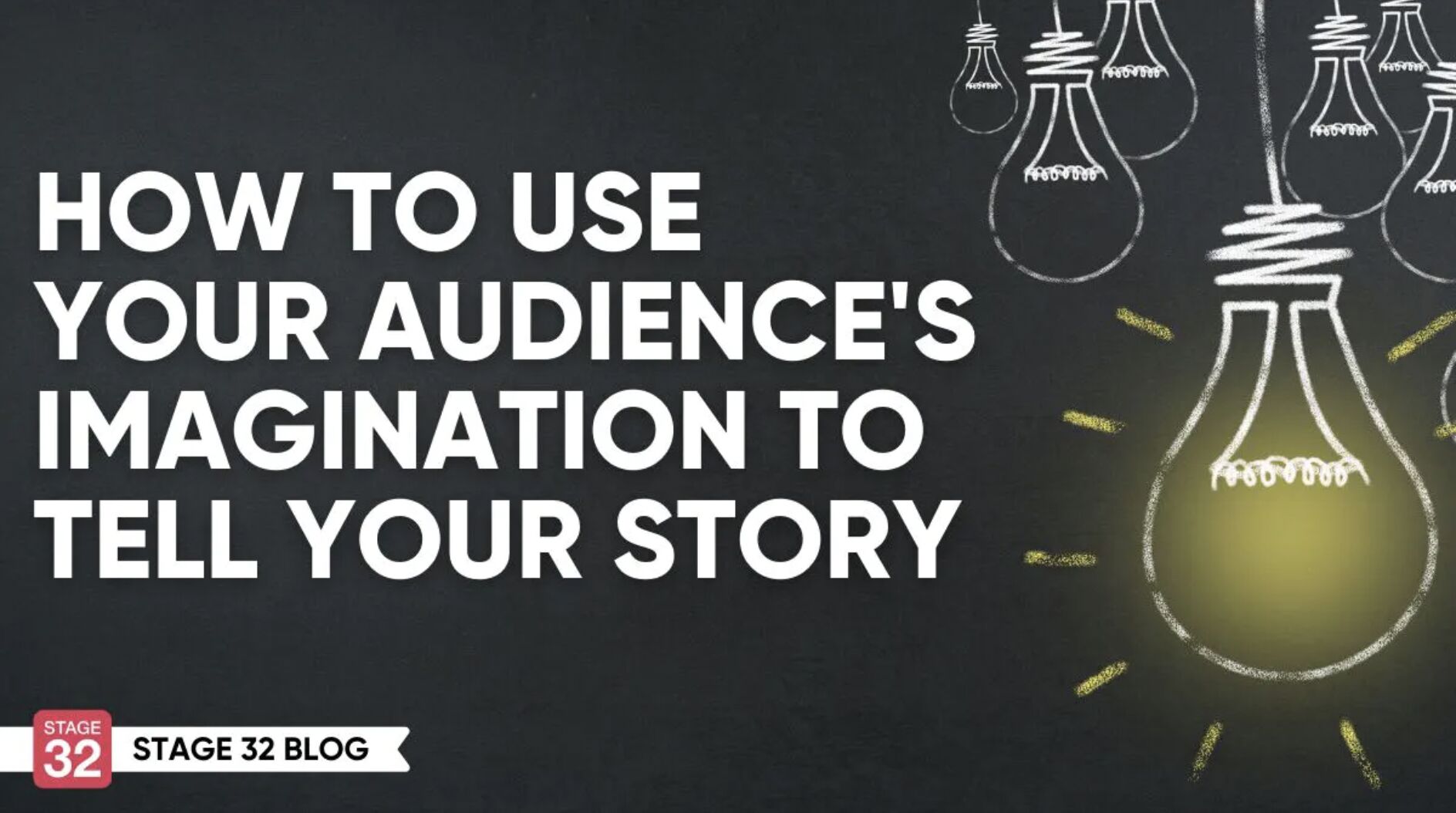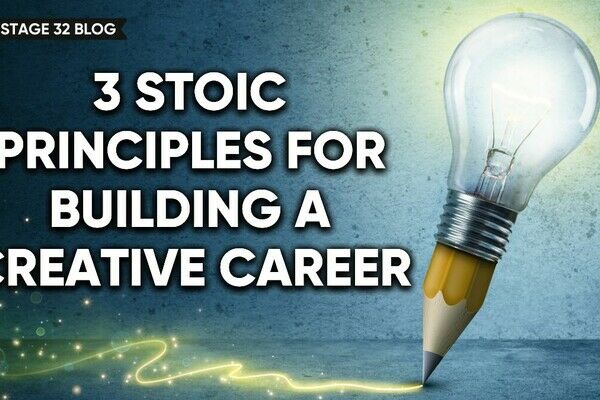Rule 1: Never tell the audience what they already know.
Rule 2: Knowing what to leave out is as important as what to leave in.
The crux of this blog is "Never dramatize what the reader can imagine for themselves," at least for on-screen drama. Novelists may need to give this some thought. But for screenwriters letting the audience fill in the blanks of the on-screen story with their own imagination is infinitely more effective and powerful than walking them through something they have already anticipated and essentially written in their own minds.
Case in point, here’s an example from Downton Abbey by master story-teller Julian Fellowes. Warning, spoiler alert from Season 2, Episode 7.
After returning from the war, Thomas buys a shed full of flour and baking supplies to capitalize on the post-war shortage. He sells a sample to Mrs. Patmore, the Abbey cook, for use in the kitchens. She tests the wares by baking them into a cake. After it comes out of the oven, she and Daisy (her assistant) taste the cake, but both spit it out in disgust - it's inedible! Mrs. Patmore takes a pinch of the 'flour' directly from the package and discovers it's not flour at all. It’s plaster dust!
Fellowes then cuts away. The next scene is another story thread concerning other characters. But our anticipation is already building as to what is going to happen next between Thomas and Mrs. Patmore. What will she say to Thomas? How will he react? By cutting away, Fellowes creates anticipation and keeps us glued to our seats. He may take us to two or three other story threads before weaving us back to the Thomas/Mrs. Patmore narrative.

Meanwhile, our imaginations are working overtime anticipating the coming beats, such as:
- Mrs. Patmore confronts Thomas indignantly about his 'flour' in the ill-fated cake.
- Thomas doubts her assertions.
- Mrs. Patmore demands he try a piece
- Thomas’s shock, astonishment and refusal to believe her. He suspects Mrs. Patmore is lying.
- She demands he taste the actual flour, which she then produces in its package.
- Thomas tastes the flour and realizes that what he has sold her is worthless plaster dust.
- Thomas and Mrs. Patmore check the two or three other bags of flour and ingredients she was testing to see if they are genuine, only to learn they, too, are plaster dust.
- The dawning shock and realization for Thomas that if this bag of flour is rubbish, maybe the hundred other bags of flour and ingredients he has just purchased are rubbish also.
- The look of sheer betrayal on his face when he realizes not only is he not going to get paid but he has been had.
- The revelation that the entire shed is full of baking goods that he has spent his life savings on and even borrowed money to buy are all actually worthless.
Are any of these the next beats in the story thread? No.
All of the above takes place only in our imagination. I admit mine may be overactive, but I'd wager that we anticipate some or all of the above will happen next. In fact, these beats must have taken place off-screen to get us from the last scene where (Mrs. Patmore & Daisy spit out the cake) to the next scene Fellowes does take us to.
Fellowes brilliantly leaves all of the above to our imaginations and out of the actual script, doubling or tripling the impact of the events.
The next on-screen scene, after Mrs. Patmore and Daisy spit out the cake, is Thomas, in full despair, bursting into the shed full of his worthless purchases. He loses total control and destroys everything he has bought in a rage of anger, frustration, and humiliation. His ticket to post-war prosperity is a scam, and he has been had.
As we see Thomas's reaction, we are instantly telling the back-story beats to ourselves, as they must have led to Thomas’s meltdown. The story expands instantly in our minds, far beyond the borders of the screen, bringing it truly to life all by giving us less rather than more.
Fellowes ratchets up the involvement by actually leaving things out. He’s got us telling the story to ourselves, and what could possibly be more convincing than that? Of course, to give Mr. Fellowes full credit, what is left out is also part of the writing. Talk about pace and talk about brilliance. This is master story-telling at its best.
So, how do we learn this technique? What are the principles, and how do we distinguish between what needs to be in the script vs what can be left to the audience's imagination? Good question!
Let's take a look at what is essentially left out of the script and left to our own minds to include. What's interesting is that these beats are essentially Thomas's revelation. A revelation, according to John Truby, is where a character learns the truth about who they really are. As John says, the character learns they are not "this" kind of person. They are "that" kind of person. For Thomas, his revelation is that he is not a shrewd, opportunistic, canny investor capturing profits from the shortage of baked goods in post-war Britain, but he is actually a fool who has been duped by a con man and taken for every cent and then some and exploited because of his own greed. These are powerful truths and present a huge obstacle.
Usually, we think of the character revelation in a story as the key element which must be present. But in this case, what we are seeing is the aftermath of the revelation. The consequence of the revelation and the choice that Thomas makes after her learns the truth that he has been had and taken. His decision is to go on a rampage of destruction in the throws of his despair. That's the choice he makes. John Truby, the eminent screenwriting teacher, says that the essence of drama is a choice. Thomas decides to destroy his worthless inventory in an emotional firestorm.
The revelation itself, the moment or realization where Thomas knows he has been had, is not shown. The beats leading up to and including Thomas learning the truth Fellowes leaves in our minds to instantly explore where it is most powerful. It's a masterful technique, and Fellowes applies it well. It takes a tremendous amount of discipline and skill as a writer to leave these elements out of the on-screen story. Lesser writers would have put them in, spoon-feeding the audience, stretching their patience, and weakening the story.
So which beats do you leave in and which do you leave out? Over and over again, the
Downton Abbey scripts cut to the essential next scene, not to the logical next scene. It cuts to the unpredictable action/reaction/choice, not to the easily anticipated.
So leave in the beats that involve a decision. Usually, you want the beats that involve a revelation, but as we see above, even those can be left, in some cases, as sub-text most effectively.
From a writing perspective, map out all the beats in the drama and then decide which are really dramatic, which involve a choice and action, and leave the rest to the audience. There are no hard and fast rules but this exercise surely points out the potential benefits of scene sub-text and giving the audience less rather than more. Actually giving them less IS giving them more!
This technique is especially noticeable in seasons 1 and 2 of Downton Abbey, where Fellowes is writing so economically in order to pull the audience in and establish the longevity of the show. And, doesn't he succeed.
Knowing what to leave out is as important as what to put in and is a crucial skill in screenwriting.
Let's hear your thoughts in the comments below!
Got an idea for a post? Or have you collaborated with Stage 32 members to create a project? We'd love to hear about it. Email Emily at blog@stage32.com, and let's get your post published!
Please help support your fellow Stage 32ers by sharing this on social. Check out the social media buttons at the top to share on Instagram @stage32, Twitter @stage32 Facebook @stage32, and LinkedIn @stage-32.



















